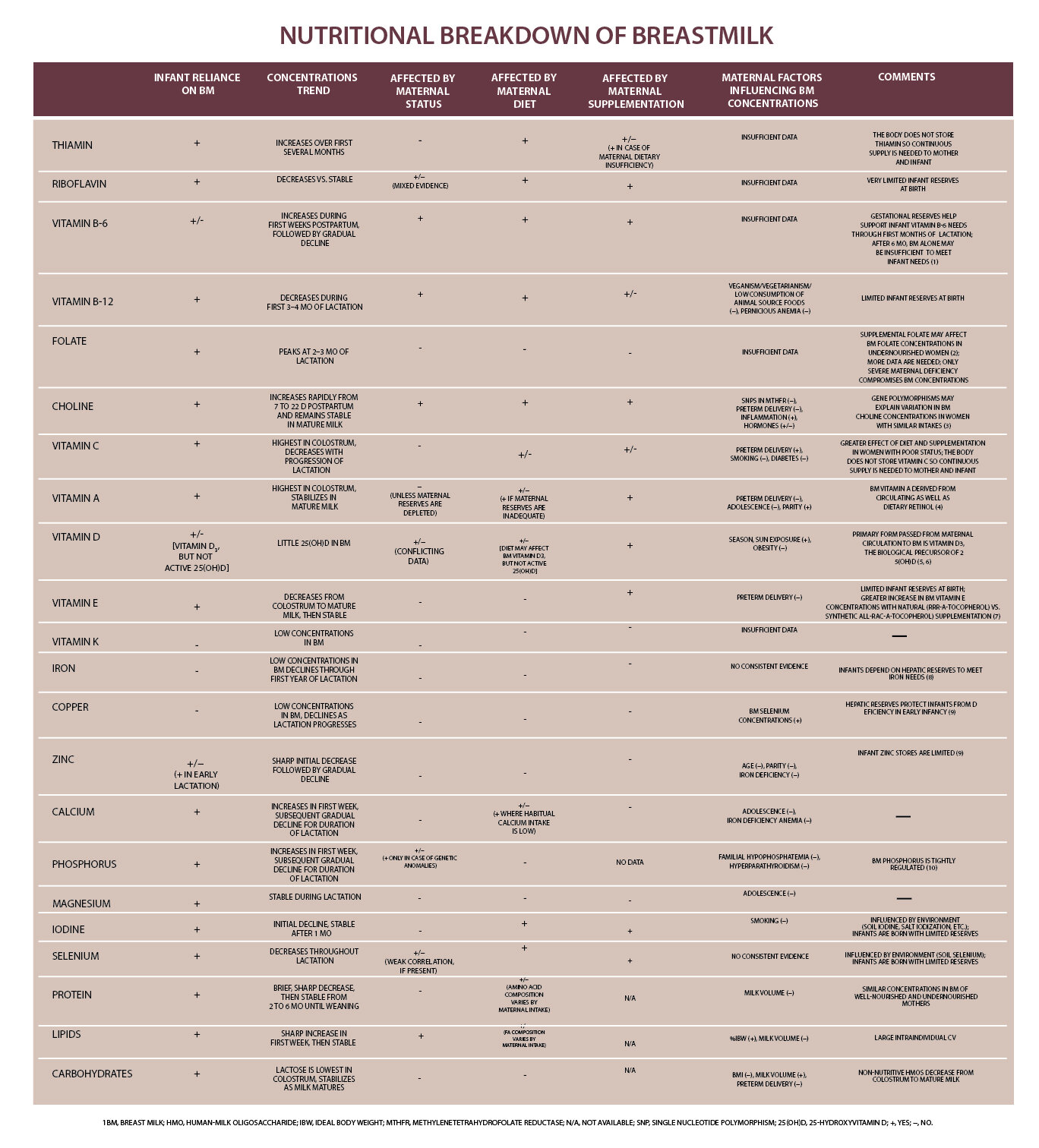The past couple of decades have seen plenty of research and studies involving breastmilk and breastfeeding. Each study reveals more about what many mothers have come to call liquid gold, and while each study often uncovers new findings every single one conclusively affirms the benefits of breastmilk and breastfeeding babies.
Why is it so beneficial though? A large part of that answer lies in the components found in breastmilk, and when those components are delivered to the baby through the milk. The what (components) is answered by the three main types of breastmilk that follow the when, which is during the three stages of lactation.
The first stage is the colostrum stage and this stage produces colostrum, a thick yellowish (almost egg yolk) like liquid that comes out in the first couple of days following the baby’s birth. This type of milk is filled with immunizing factors, is full of protein, has the highest levels of Vitamin C and Vitamin A and has higher levels of sodium, magnesium, and chloride than all other stages and types of breast milk. Its main function is to protect the baby and boost its immune system; a boost that is often believed to last them well into the rest of their lives.
The second stage is the transitional stage and this stage produces what is known as transitional milk. This type of milk is a mix of colostrum and mature breast milk. It is less yellow, whiter, and it changes in its consistency. This type of milk now has more fat and calories instead or protein, and it also contains lactose (a natural sugar), which babies need to gain weight. Like colostrum it also has antibodies and immune boosters.
The final stage, and the stage that mothers will keep for the remainder of their breastfeeding journey, is the Mature Milk stage where mothers now produce breastmilk regularly. This milk will have sugar, vitamins, protein, minerals, growth factors, and enzymes that will help the baby grow healthy and strong. Mature milk can be further broken down into two types: foremilk and hindmilk. The former is watery and provides thirst quenching properties for the baby, and it is lower in fat. The latter—hindmilk—is thicker, creamier, and contains the fat that babies need to gain weight. Mothers might notice that the milk they pump out can go from watery to thick as the session progresses. This is the same thing that happens when a baby feeds directly from the breast.
Regardless of stage, it is ideal that mothers breastfeed their baby or feed their baby expressed/pumped breast milk. The changing qualities of breastmilk, made to match the baby’s needs and stages, plus the psychological and emotional benefits to both mother and baby can’t be matched by alternate sources of nourishment.
So how do you make your breastmilk better for your baby? Simple. Take care of yourself! Many micronutrients and macronutrient compositions of breast milk can change (for the better) if a mother keeps better nutrition. Making sure you get good and healthy food, continue your prenatal vitamins, get enough DHA, and get enough sun for Vitamin D production will help enhance what you produce.
According to the World Health Organization (WHO), solely breastfeeding your baby is the ideal method of feeding and nutrition for at least the first 6 months of a baby’s life. Following that, regular breastfeeding should still be a part of a baby’s diet until they are two years of age. Even an older baby that is eating solid foods (approximately seven months old) can get over 90% of their nutritional needs from breastmilk.
To learn more about breastfeeding and for breastfeeding support, follow Mommy Mundo on Facebook and Instagram! Breastfeeding is one of Mommy Mundo’s main pillars and advocacy, and we are here to support all moms in their breastfeeding journey.



Leave a Reply